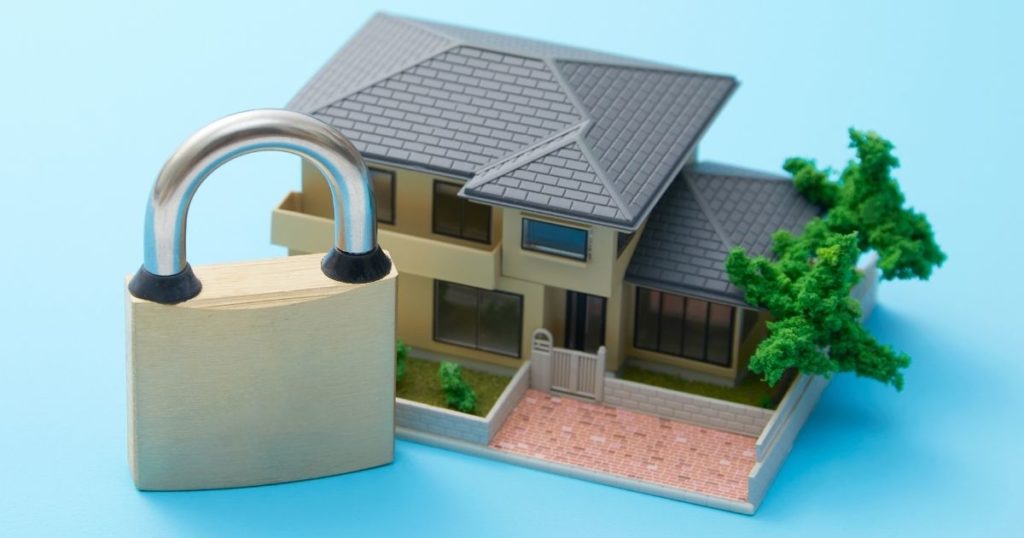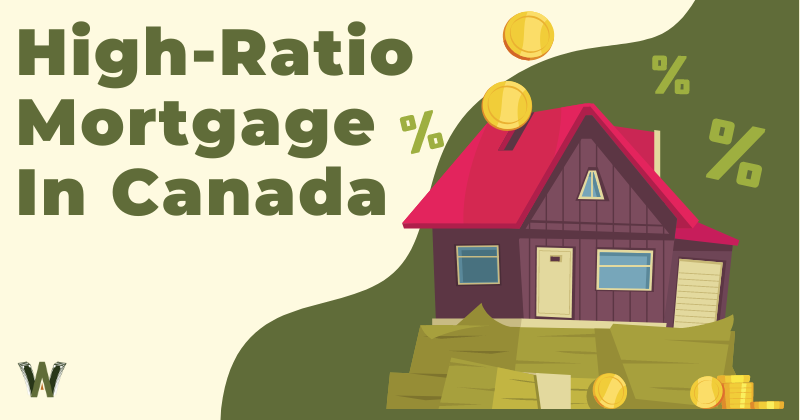If you’ve been thinking about buying a house in Canada, then you’ve probably already spent some time looking into your options to obtain a mortgage.
Unless you plan on buying the home upfront with cash, you’ll need to make a cash down payment on the house and work with a lender to get the remaining amount financed.
A high-ratio mortgage in Canada is a mortgage with a loan-to-value (LTV) ratio greater than 80%, while a low-ratio mortgage is a mortgage with a loan-to-value ratio less than 80%.
Below, I’ll explain a bit more about how LTV ratios are calculated and how they’re used to determine whether or not a mortgage has a high or low LTV.
Then, I’ll explore some of the pros and cons of high-ratio mortgages in Canada and show you a few alternatives to explore.
Understanding Down Payments & LTV (Loan-To-Value Ratio)
The average cost of a home in Canada is $644,643 as of November 17, 2022. Provincially, the price of buying a home can vary quite a lot, though.
For example, in Toronto, the average home costs over $1.3 million. By contrast, the average cost of buying a home in Saskatchewan is just under $284,000.
Regardless of whether you’re buying a home for less than $300,000 or over $1 million, lenders are going to require you to make a down payment on the home before issuing you a mortgage.
A down payment is the money that you pay down towards a home and is applied to your mortgage. The main reason down payments are required is that it shows the lender that you’re a responsible borrower.
Essentially, lenders just want to see that you’re invested in the property and have the budgeting skills to save money.
The amount of money you put down on your house determines the loan-to-value (LTV) ratio of your mortgage.
For example, if you’re purchasing a $500,000 house and you’re putting $100,000 down, then you’d receive a mortgage loan for $400,000. This would put your LTV ratio at 80% – the value of your down payment was exactly 20% of the home’s value, and the mortgage you took out was payment for 80% of the home’s value.
Not everybody makes a 20% down payment on their home. Some buyers make smaller or larger down payments. However, the down payment you make can directly affect your mortgage payments, interest rates, and the cost of insuring your home.
How Much Do I Need For A House Down Payment In Canada?
The amount of money that you’re required to put down is regulated by the Canada Mortgage and Housing Corporation (CMHC). Down payments vary, depending on the value of the house that you’re purchasing. Here are the CMHC’s current rules regarding a house down payment:
| Home Value | Minimum Down Payment |
| $500,000 or less | 5% |
| $500,000 to $999,999 | 5% on $500,000, plus 10% on any amount over $500,000 (under $1 million) |
| $1 million or greater | 20% |
First-time home buyers are typically looking for a home that costs under $1 million, which means that they won’t have to make the same high down payment as those purchasing larger, more luxurious homes. The CMHC has implemented these regulations to ensure that everybody gets a fair shot at owning a home.
What Is The Threshold For A High-Ratio Mortgage In Canada

A high-ratio mortgage is a mortgage with an LTV ratio greater than 80%, while a low-ratio mortgage is one with an LTV ratio under 80%. In other words, unless you’re making at least a 20% down payment on your home, then lenders will classify the loan as a high-ratio mortgage.
If you’re purchasing a home that’s worth $1 million or more, then you’ll automatically be required to make at least a 20% down payment, which means that you’ll have a low-value mortgage.
When Are High-Ratio Mortgages Issued?
Most traditional lenders view high-ratio mortgages as somewhat riskier than low-ratio mortgages. Since you’re making a lower down payment, you don’t have as much equity in the property and may not have the financial stability needed to afford monthly mortgage payments along with standard property maintenance.
That being said, many home buyers simply can’t afford to make a 20% or greater down payment on their first house. Today’s housing prices are higher than they’ve ever been, and the average Canadian doesn’t have an extra $100,000 of liquid cash reserves in their savings.
In fact, I’d say that most first-time home buyers receive a high-ratio mortgage. This is why the CMHC provides mortgage default insurance to home buyers, which effectively protects the lender, allowing them to issue you a home loan.
Are High-Ratio Mortgages Cheaper Than Low-Ratio Mortgages?
Naturally, one might assume that high-ratio mortgages come with a higher interest rate than low-ratio mortgages. When lenders take on greater risk, it usually incurs higher rates.
However, this is not the case with most mortgages.
In fact, the opposite is true. High-ratio mortgages are actually considered low risk, as far as lenders are concerned. This is because the CMHC requires home buyers to purchase mortgage default insurance when they apply for high-ratio mortgages.
This insurance protects the lender, meaning that they’ll still receive their money as an insurance payout, even if you default on your mortgage. As such, high-ratio mortgages may come with an even lower interest rate than a low-ratio mortgage.
What Credit Score Do I Need For A High-Ratio Mortgage In Canada?
One of the first things you’ll need to work on before you’re approved for any mortgage (high-ratio or low-ratio) is your credit. If your credit score doesn’t meet the basic requirements to obtain a mortgage, then your application will likely be denied.
If your application is denied, your credit can then be further impacted, as your credit report will now reflect a hard inquiry that will remain on your credit for two years.
In previous years, the CMHC only required borrowers to have a 600 credit score. However, recent changes to the housing market and economy have caused the CMHC to increase the credit limit for mortgages.
Today, mortgage applicants must have a credit score of at least 680 before they can be considered for a traditional mortgage.
High-Ratio Mortgages: The Pros & Cons

High-ratio mortgages come with benefits and drawbacks, and you should know both sides of the story before making a final decision.
Pros Of A High-Ratio Mortgage
- You can buy your home faster: you don’t have to spend as much time saving up for a down payment.
- You’ll have extra money left over: since you won’t have to make as high of a down payment, the additional money you have can be invested in home improvements and maintenance, which can increase your home’s value.
- You may receive a lower interest rate: since high-ratio mortgages must be insured, they represent a lower risk for lenders, which can help you get a lower interest rate compared to a non-insured mortgage.
Cons Of A High-Ratio Mortgage
- You’ll need to purchase mortgage insurance: high-ratio mortgages can only be obtained if the borrower subscribes to mortgage default insurance, which can incur additional monthly expenses.
- It may take longer to pay off your home: since you won’t be making as great of an upfront investment, you’ll have less equity in your home, and your payment terms may be longer.
How Does Mortgage Default Insurance Work?

Mortgage default is a special type of home insurance that the CMHC generally requires borrowers to subscribe to in order to be approved for a high-ratio mortgage.
While buyers can opt out of purchasing mortgage default insurance, this typically results in far higher interest rates and administrative fees imposed by the lender.
Mortgage default insurance provides a layer of protection to the lender in the event that you’re unable to fulfill your mortgage terms.
If for any reason, you default on your mortgage, the insurer will temporarily or permanently cover your mortgage expenses. This gives lenders the confidence they need to approve you for a loan.
How Much Does Mortgage Default Insurance Cost?
Mortgage default insurance is calculated based on the LTV ratio of your loan, and the premium is charged as a percentage of your mortgage. Here is how much the CMHC charges for mortgage loan insurance, depending on your mortgage LTV value:
| LTV Ratio | Premium Percentage Charged |
| 65% or less | 0.60% |
| 65.01% to 75% | 1.70% |
| 75.01% to 80% | 2.40% |
| 80.01% to 85% | 2.80% |
| 85.01% to 90% | 3.10% |
| 90.01% to 95% | 4.00% |
As you can see, the lower your LTV ratio is, the less you’ll be charged for mortgage loan insurance. Once you approach high-ratio mortgage territory (over 80% LTV ratio), then your premium will range between 2.80% and 4.00% of your mortgage value.
Here’s an example of how this would look like:
- You’re purchasing a $400,000 home and putting $40,000 down, which gives you an LTV ratio of 90% (you’re financing 90% of the total home cost).
- Referring to the chart above, a 90% LTV ratio would have you paying a 3.10% mortgage premium for your mortgage loan insurance.
- At this rate, your mortgage insurance would add an extra $12,090 to your $390,000 mortgage.
- The $12,090 insurance fee would be split up and added to the monthly mortgage payments that you’ll be making.
Alternatives To A High-Ratio Mortgage In Canada
Not sure if a high-ratio mortgage is right for you? Here are a few alternatives to consider instead.
Saving For A Higher Down Payment
If you want to get a lower LTV ratio, then you can save up extra money for a down payment.
The more money you put down on your home, the lower your LTV ratio will be and the better interest terms you may receive from the bank (without having to purchase mortgage loan insurance).
Purchasing A More Affordable Home
It may be a good idea to tune down your taste a bit and purchase a more affordable home. Applying the same down payment to a cheaper home can lower the LTV ratio, resulting in more favourable loan terms.
Conclusion – Should I Get A High-Ratio Mortgage In Canada?

Thanks to regulations implemented by the CMHC, lenders are more willing to offer high-ratio mortgages to buyers who don’t have as much money to put down toward their homes.
Although a high-ratio mortgage does require the buyer to purchase mortgage default insurance, it may also come with a lower interest rate which means that you won’t have to save up as much for your down payment.
One of the best ways to get a better rate on your mortgage is to apply with a higher credit score. If you’re looking to build your credit, keep on reading to see my guide on how to boost your credit score by 100 points next!




